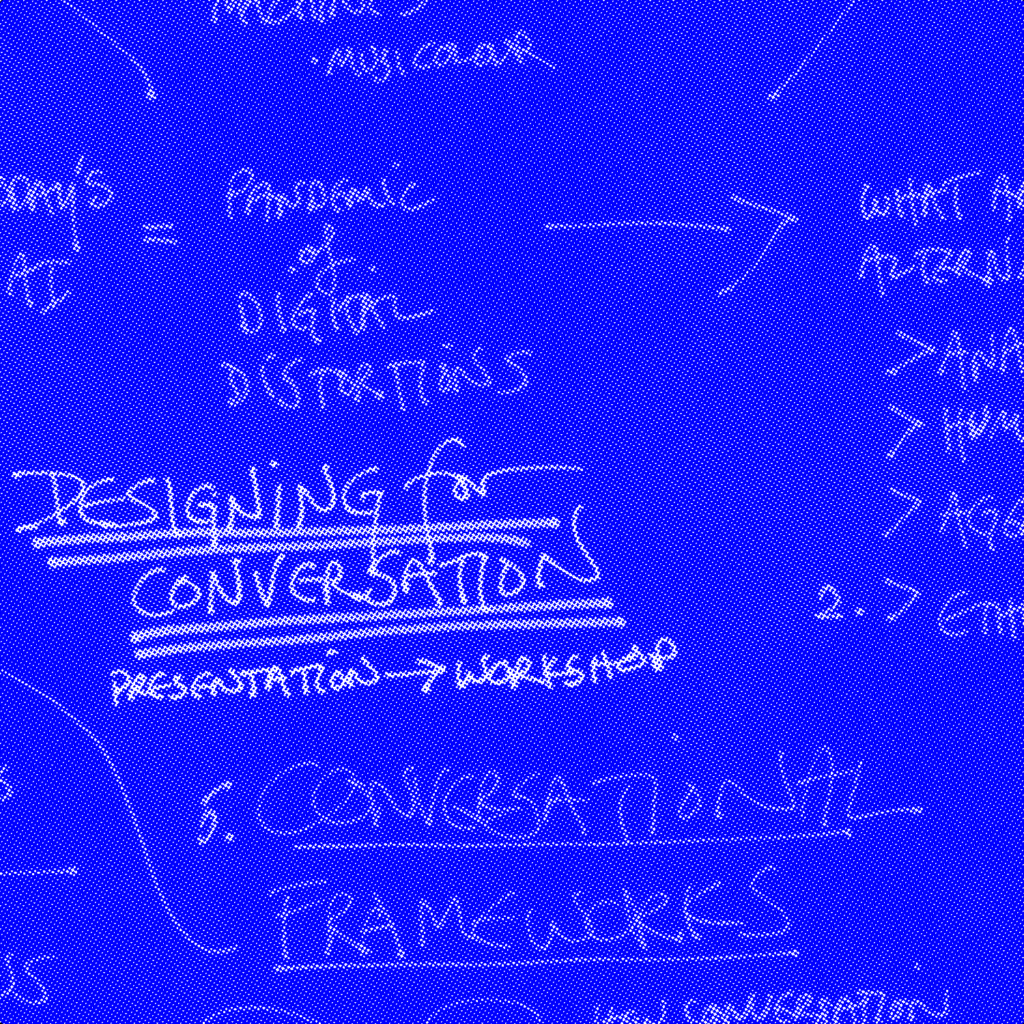We’re [GD – 502] reflecting on Paul Pangaro’s illuminating February 4th workshop about designing conversations. In both the lecture and workshop, Pangaro illustrates a new reality for conversing with AI Voicebots: he imagines devices that promote more intelligent, transparent and novel conversations between machines and humans.
Pangaro proposes this in opposition to our current relationship with these devices. He characterizes tools like Alexa and Siri as AI voice bots that can only participate in “transactional” conversations: “Alexa, what’s a good place to get pizza?” or “Siri, what’s the weather?” Due to their design, these devices are limited to certain modes of conversion, and are often not good/great conversers.
Conversation means “to turn together.”
Pangaro defines a “good conversation” as one that has an agreed context, keeps up engagement, “leads to agreements, and enables coordination.” A great conversation “delights you, energizes you… is generative and evolves.”
In the workshop, Pangaro pushed us to be really granular and specific about analyzing conversations – to reflect on how complex and fantastic human-to-human conversation can be, and translate that complexity into our designed machines. In turn, we had very complicated conversations and made equally complex sketches:
 The sketch illustrates a conversation. The yellow lines distinguish the conversation’s architecture: separating it into levels of goals and means. Words like collaborating, delegating, controlling, and guiding helped us define the type of conversation. The arrows define the flow and hierarchy between the conversers.
The sketch illustrates a conversation. The yellow lines distinguish the conversation’s architecture: separating it into levels of goals and means. Words like collaborating, delegating, controlling, and guiding helped us define the type of conversation. The arrows define the flow and hierarchy between the conversers.
Learning to design better conversational AIs begins here: being really intentional about understanding the ways we talk. It’s really exciting! Since the workshop I’ve been thinking about the ways people communicate on social media: for example, what types of conversation are these tools encouraging or discouraging through their interface, and how it can be more generative.

